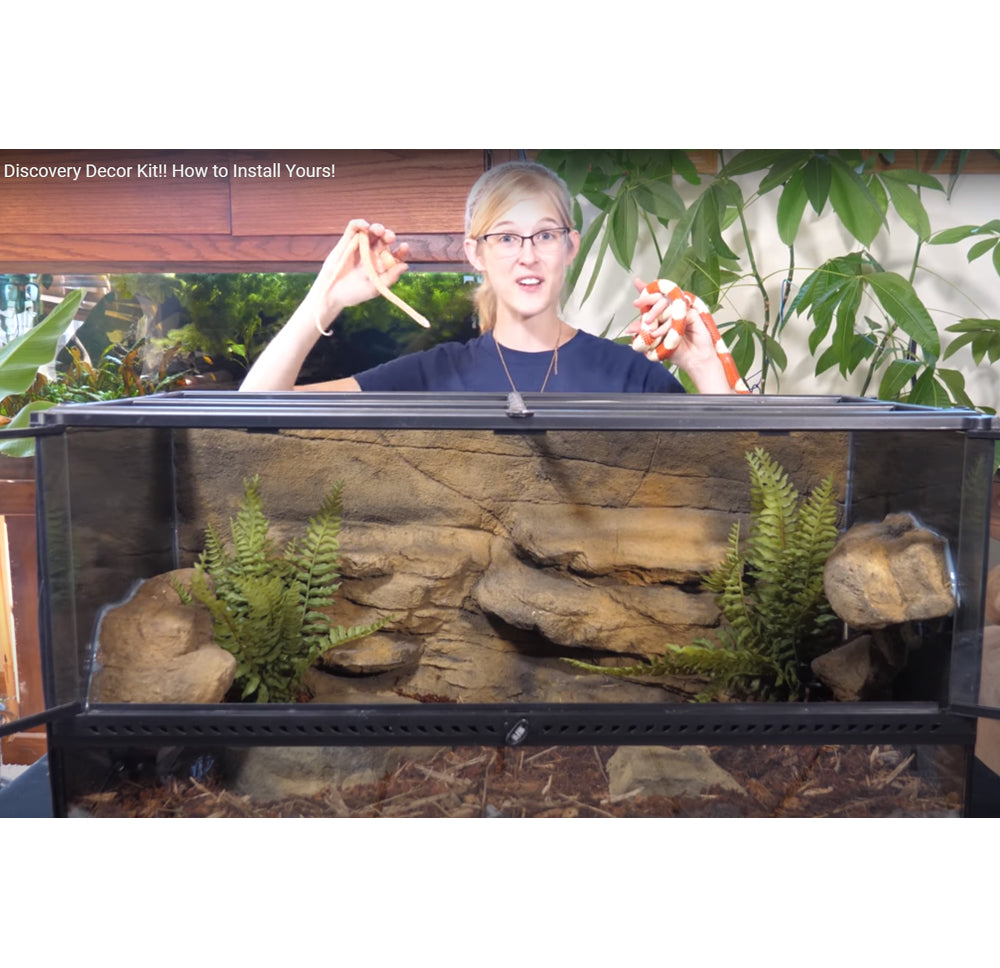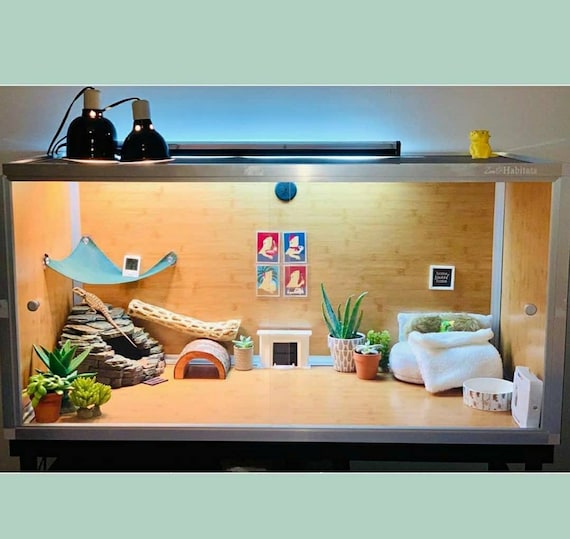Creating a comfortable, stimulating environment for your pet reptiles is not just a hobby; it’s an essential aspect of responsible pet ownership. As a reptile enthusiast, I’ve spent countless hours crafting the perfect terrarium decor, and I’m excited to share my insights with you. In this comprehensive guide, we’ll explore everything from essential decor items to creative ideas that will elevate your reptile’s habitat.
Why Terrarium Decor Matters
Decor plays a crucial role in the well-being of reptiles. It mimics their natural habitat, providing enrichment that allows them to express their natural behaviors. Whether you have a chameleon, bearded dragon, or snake, creating the right environment is vital. Let’s delve into the reasons why proper decor is important:
- Enrichment: Enhances physical and mental stimulation.
- Safety: Provides hiding spots and prevents stress.
- Humidity & Temperature: Helps maintain optimal living conditions.
Essential Terrarium Decor Elements
When setting up your reptile’s home, there are several key components to consider for effective decor:
Substrate
The substrate forms the base of the terrarium and impacts both aesthetics and functionality. Here are some popular substrate options:
| Substrate Type | Pros | Cons |
|---|---|---|
| Coconut Fiber | Natural, retains moisture, good for burrowing | Can mold if not maintained |
| Reptile Carpet | Easy to clean, reusable | Less natural look |
| Sand | Good for desert species, aesthetic appeal | Risk of impaction if ingested |
Hiding Spots
Reptiles need places to hide; this mimics their natural environment and reduces stress. Here are some effective hiding spot options:
- Caves: Clay or resin caves offer a secure hiding place.
- Plants: Live or artificial plants can serve as excellent cover.
- Logs and Branches: Provide both hiding and climbing opportunities.
Climbing Structures
Many reptiles are natural climbers. Including various climbing structures can enhance their lifestyle:
- Branches: Natural wood branches offer a realistic climbing experience.
- Plants: Both artificial and real plants can provide climbing surfaces.
- Ramps: Can be used to connect different levels in the terrarium.
Water Features
A small water dish or fountain can add beauty and moisture to the terrarium while promoting hydration:
- Shallow Water Bowls: Ideal for most reptiles for drinking and bathing.
- Fountains: They offer running water, which some reptiles prefer.

Choosing the Right Plants for Your Reptile’s Habitat
Live plants not only enhance the beauty of the terrarium but also help in maintaining humidity and providing hiding spots. Here’s a look at some reptile-friendly plants:
Best Plants for Terrariums
| Plant Type | Light Requirements | Maintenance Level |
|---|---|---|
| Spider Plant | Low to Moderate | Low |
| Pothos | Low to Bright Indirect | Low |
| Bromeliads | Bright Indirect | Moderate |
Considerations When Adding Plants
When choosing live plants, consider the specific needs of your reptile species. Some may require higher humidity, while others thrive in drier conditions. Always ensure the plants are non-toxic.

Decorative Elements to Enhance Aesthetics
Beyond the essentials, adding decorative elements can significantly enhance the look of your terrarium. Here are some ideas:
Natural Decor
Incorporate natural materials like rocks, driftwood, and bark to create an authentic environment.
- Rocks: Create elevations and hiding spots.
- Driftwood: Adds character and enhances climbing space.
- Bark: Great for texture and can be used as a hiding spot.
Artificial Decorations
If you’re looking for low-maintenance options, artificial decorations can be a great choice:
- Plastic Plants: Require no care and come in various designs.
- Decorative Ornaments: Themes like ruins or rock formations can add interest.
- Backgrounds: 3D backgrounds can make the terrarium more visually appealing.

The Importance of Proper Placement
Once you’ve selected your decor, proper placement is key. Here are some tips:
- Balance: Ensure that larger items do not overshadow smaller decor.
- Accessibility: Make sure your reptile can easily access food and water without obstacles.
- Avoid Clutter: Leave enough open space for your reptile to move comfortably.
Creating a Bioactive Terrarium
A bioactive terrarium incorporates living organisms such as beneficial bacteria, fungi, and small invertebrates. This setup mimics a natural ecosystem and can result in easier maintenance:
- Soil Organisms: Help break down waste and promote a healthy soil ecosystem.
- Plants: Contribute to humidity and give reptiles a place to hide.
- Detritivores: Such as springtails and isopods help maintain a clean environment.

Benefits of a Bioactive Setup
Here’s a comparison of a bioactive terrarium versus a traditional setup:
| Aspect | Bioactive Terrarium | Traditional Terrarium |
|---|---|---|
| Maintenance | Lower long-term due to natural cleaning | Higher, requires more frequent changes |
| Environment | More naturalistic, promotes healthy ecosystems | Less dynamic, static decor |
| Cost | Initial investment may be higher | Often lower upfront but higher over time |
Maintaining Your Reptile’s Terrarium Decor
Once your terrarium is set up, proper maintenance ensures a healthy environment. Regular cleaning and monitoring are essential:
- Spot Cleaning: Remove waste and uneaten food daily.
- Monthly Deep Clean: Change substrate and clean decor items.
- Monitor Conditions: Keep an eye on humidity and temperature levels.

Conclusion
Decorating your reptile’s terrarium is an enjoyable and rewarding process. From crafting a beautiful landscape to ensuring your pet feels at home, every detail matters. By implementing these tips and using your creativity, you can create a thriving environment that benefits both you and your reptile.
Frequently Asked Questions (FAQs)
What type of substrate is best for my reptile?
The best substrate depends on your reptile’s species. For example, coconut fiber is excellent for those that burrow, while sand works well for desert-dwelling reptiles.
How often should I change the decor in my terrarium?
It’s best to do a complete overhaul of decor once every 6-12 months, but feel free to rearrange or add new elements at any time.
/product/38/146774/1.jpg)
Can I use real plants in my reptile’s terrarium?
Yes, many reptiles benefit from live plants! Just be sure the plants are safe and suitable for the specific humidity and light requirements of your reptile.
Is a bioactive terrarium difficult to set up?
A bioactive terrarium can be a bit more complex initially, but the benefits of lower maintenance and a healthier environment for your reptile make it worthwhile.

What decorations should I avoid in my reptile’s terrarium?
Avoid decorations with sharp edges, toxic materials, or small parts that can be ingested. Always opt for reptile-safe products.